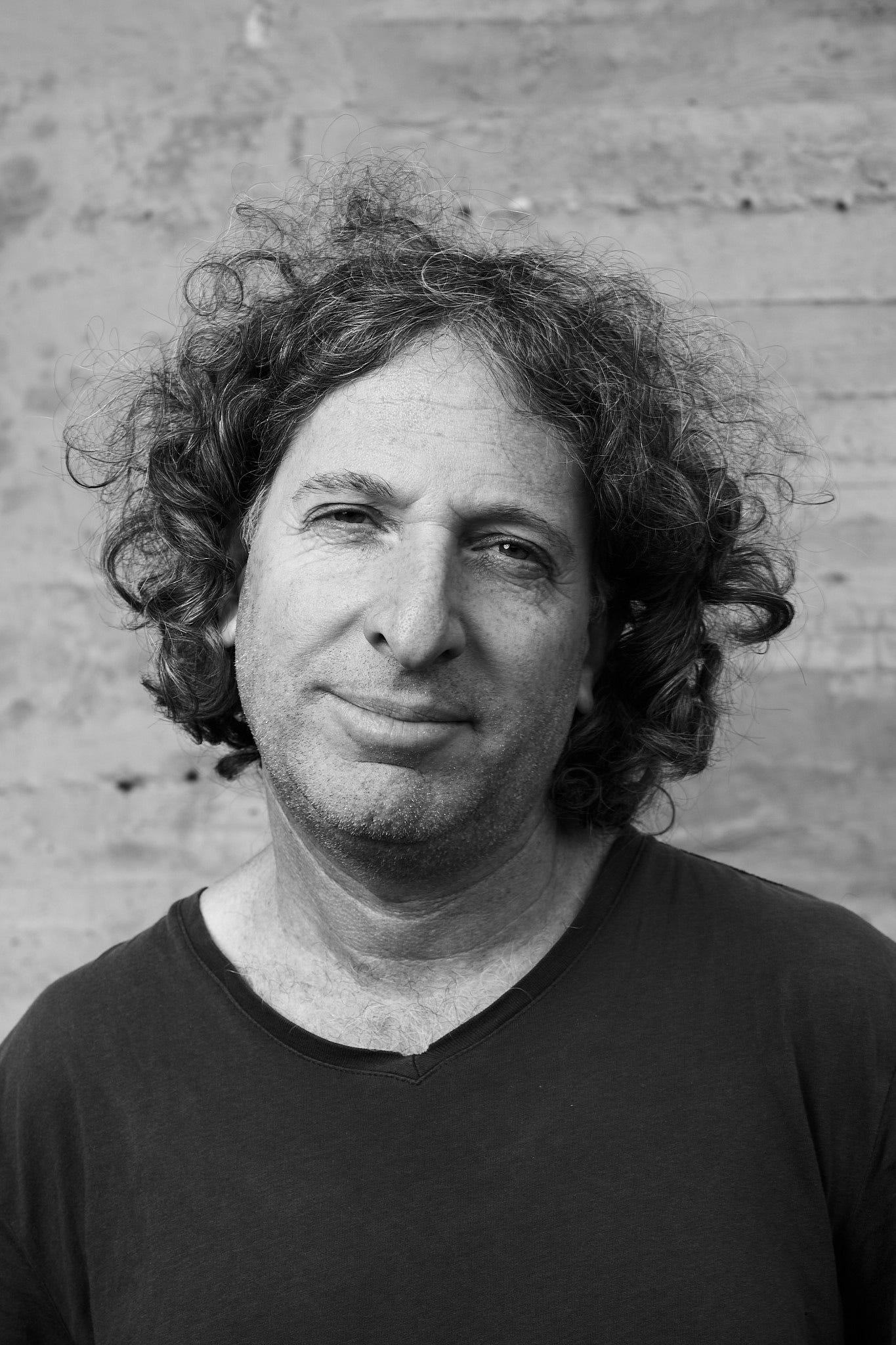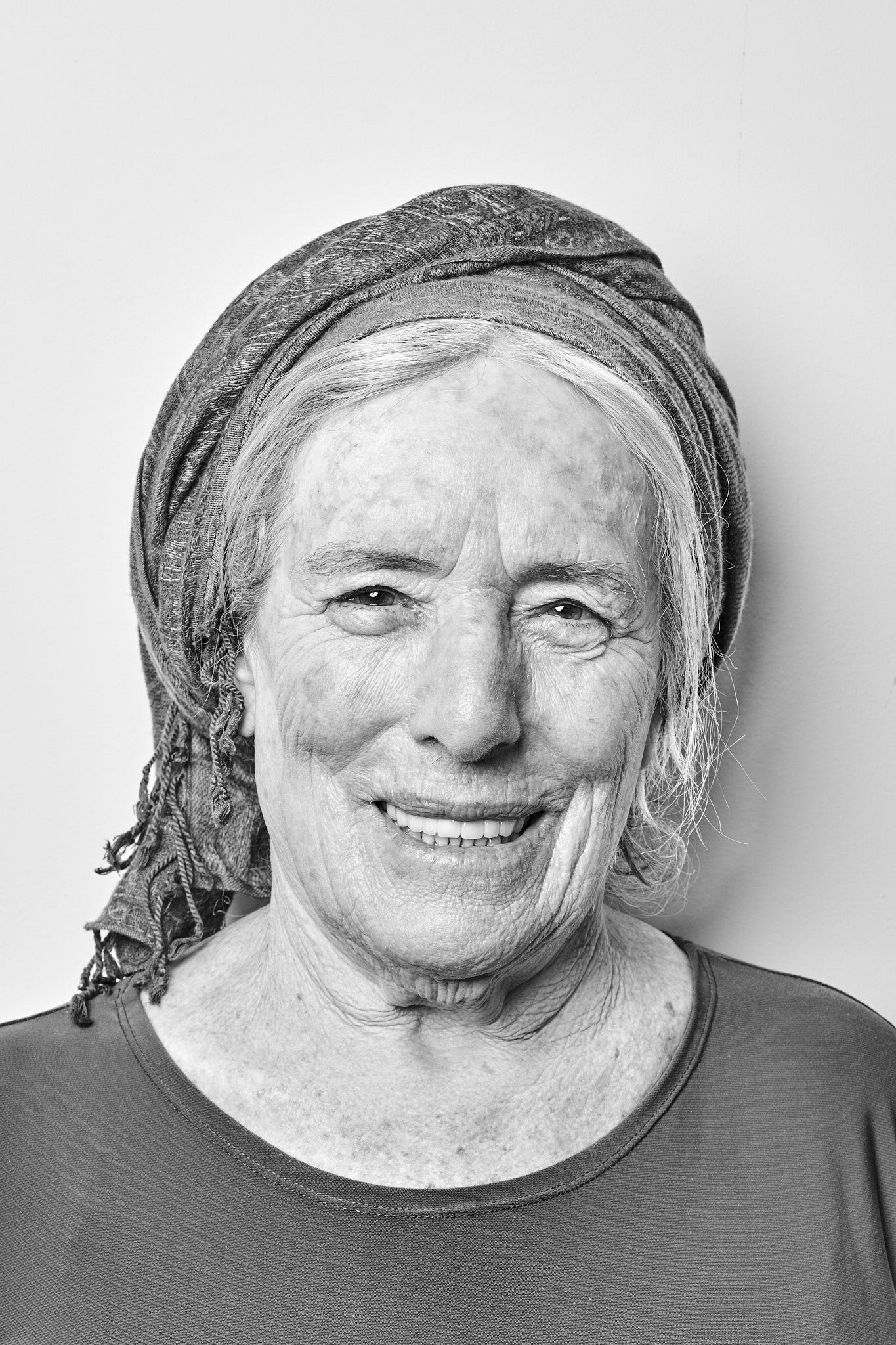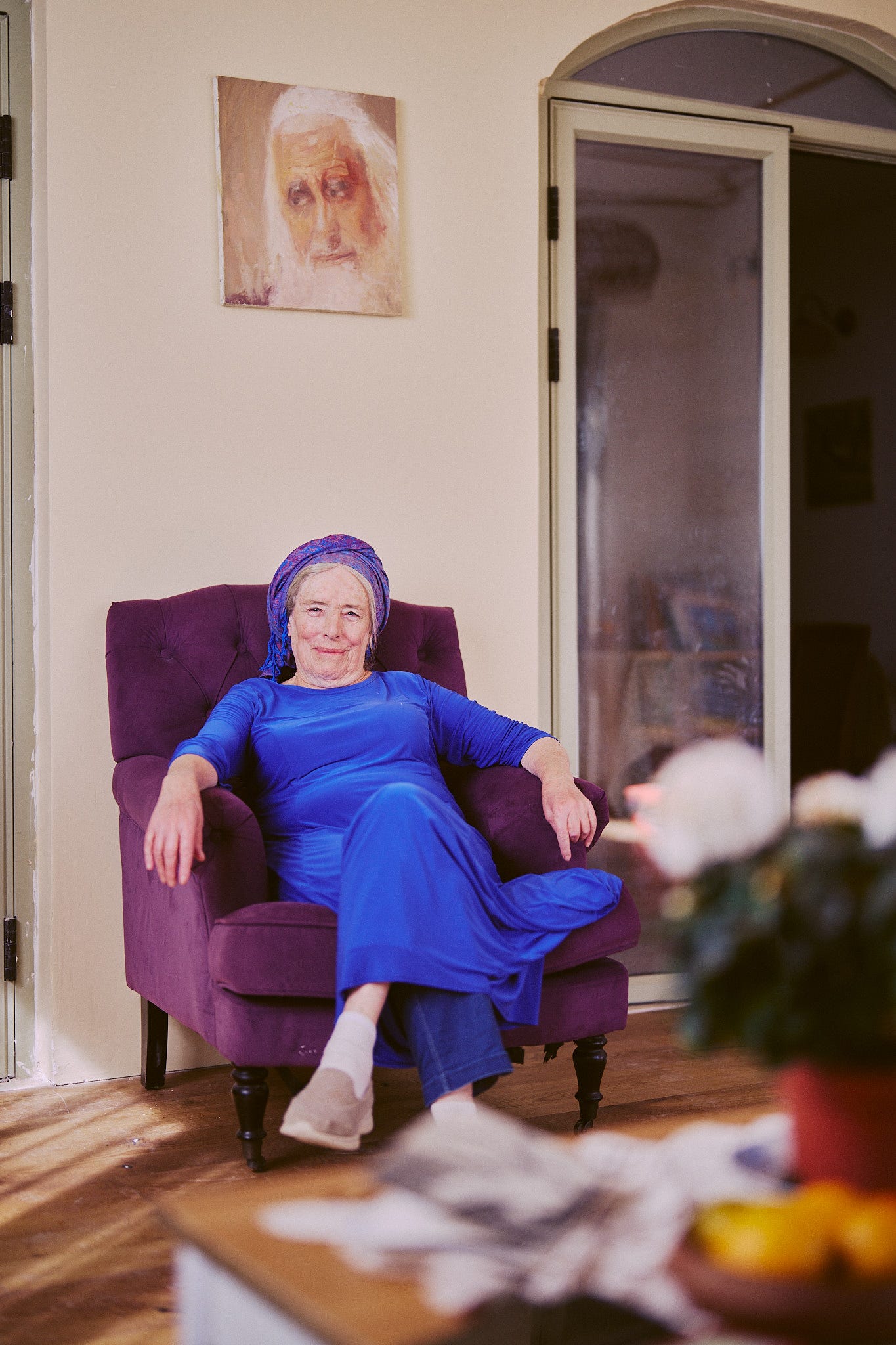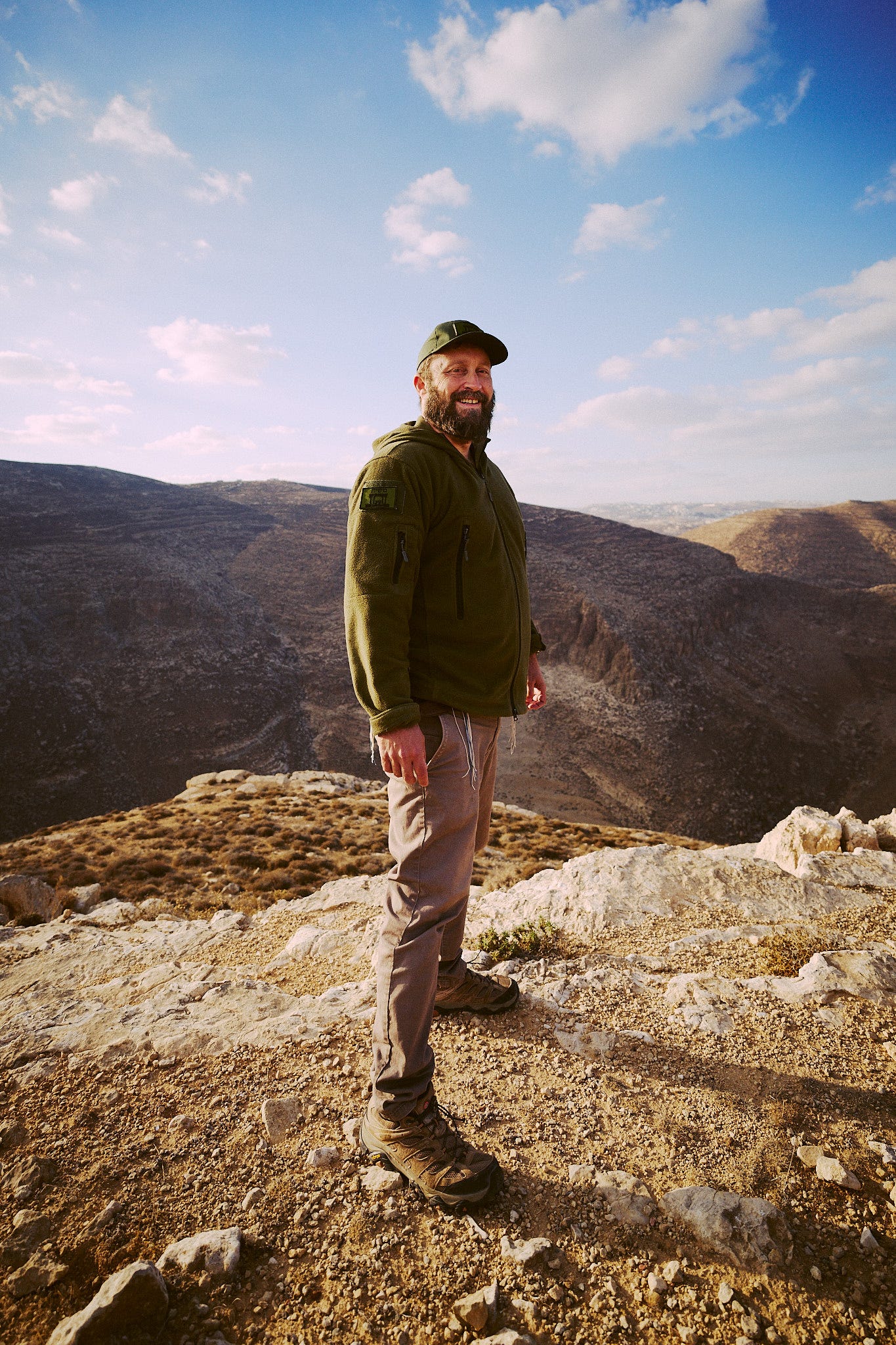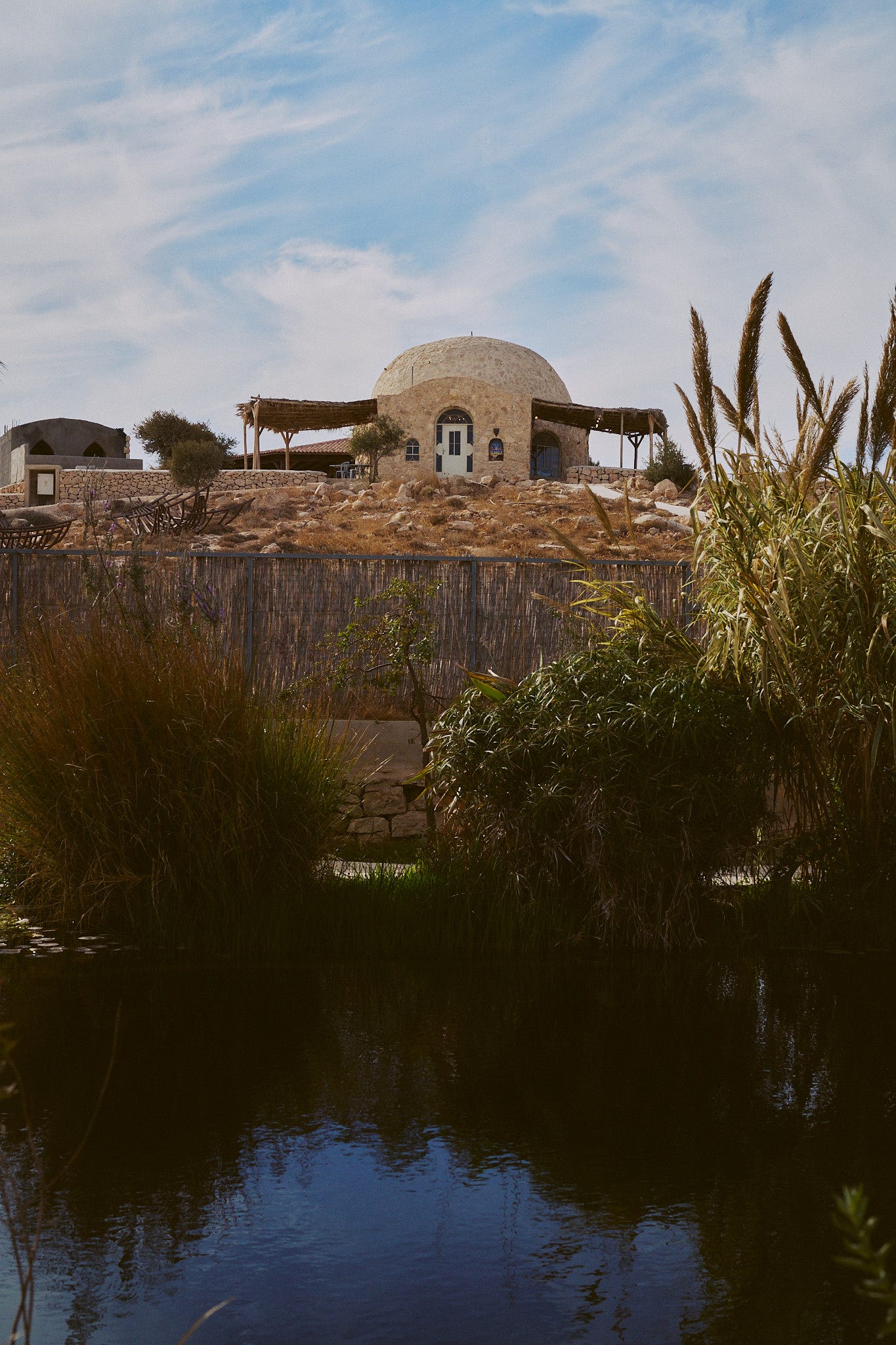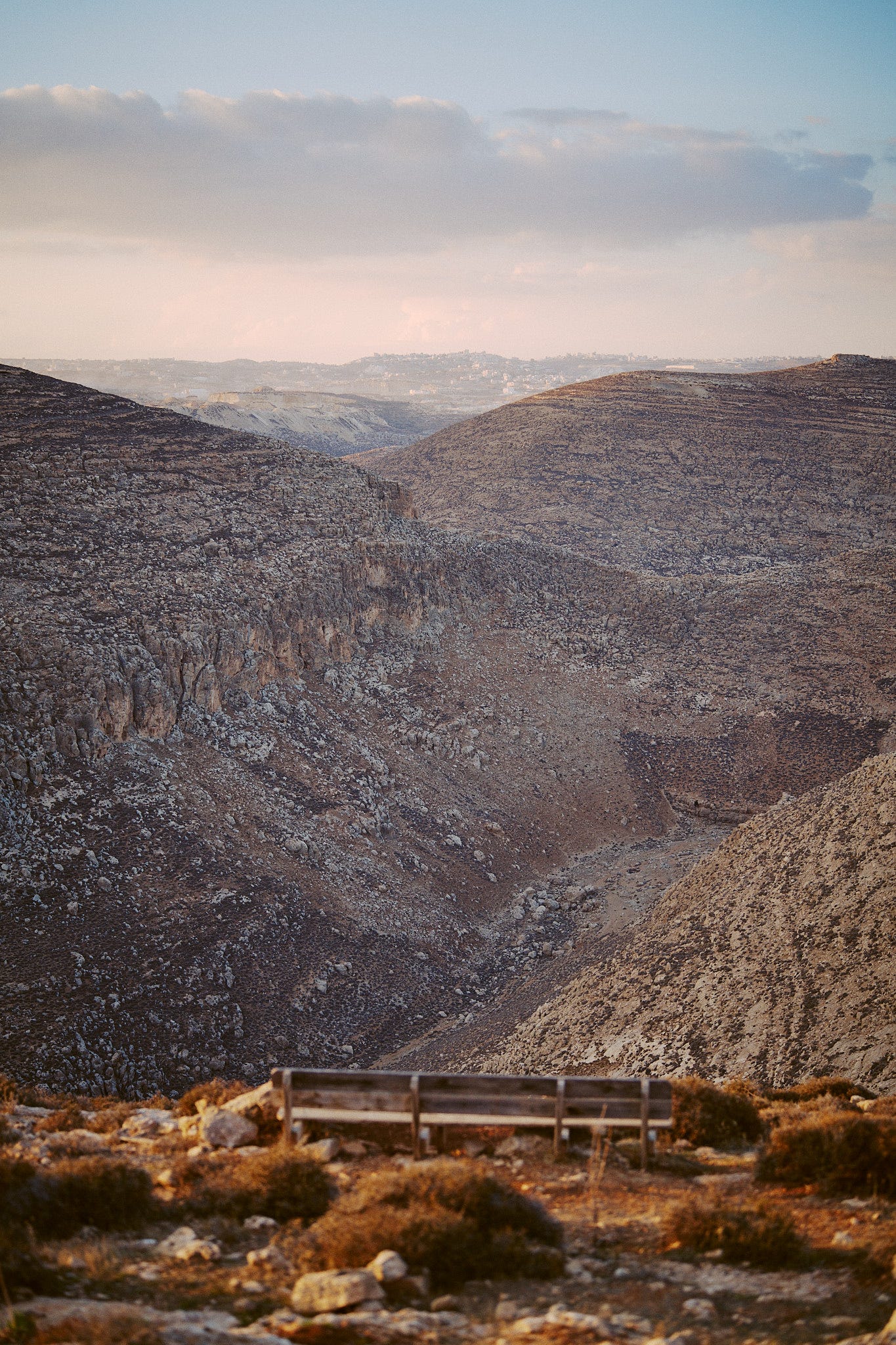Into the Settlements With a Beginner’s Mind
What might happen if I tried to forget what I thought I knew about the West Bank, and just led with curiosity?
The night before I planned to drive from breezy Tel Aviv up and over the hills, through a military checkpoint and then into the West Bank, alone and unarmed, I received a concerning text from a colleague: “Dave - I’m actually not sure if it’s a good idea if you don’t know the roads, I heard an Israeli vehicle was lynched there today.” Even after I got the all-clear from a Judean local and a friend from the military, I remained mildly haunted and struggled to fall asleep.
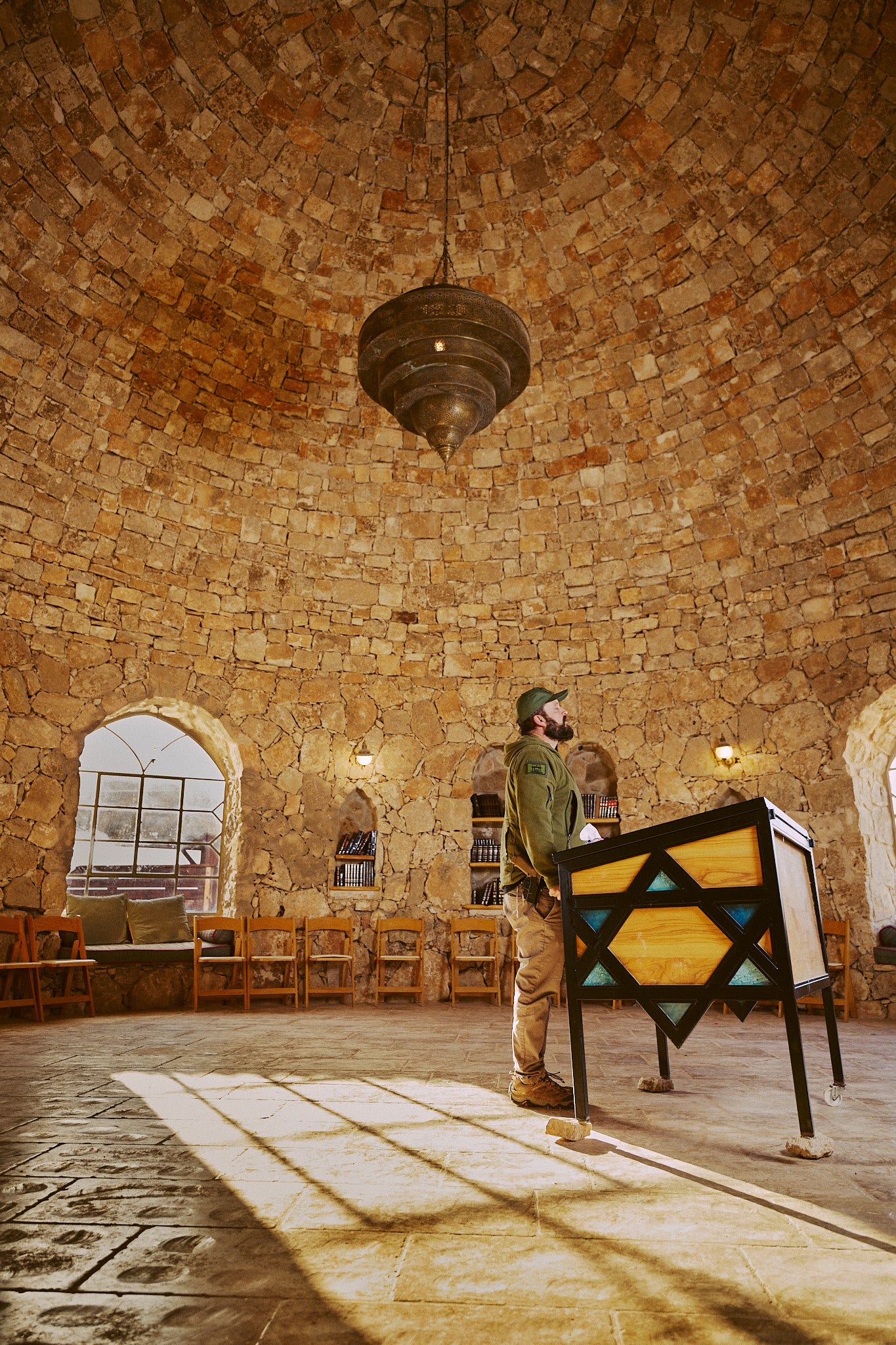
Over a decade ago, when I was last living in Tel Aviv, a run of the mill high-tech worker by day and surfboard shaper by night, I met an Israeli guy out in the water riding a board I had made, which he had recently bought in a nearby surf shop. We started talking, and at that moment Shlomy and I started a lifelong friendship. A third-generation shoemaker, he had designed a gorgeous sandal white-labeled for a premium U.S. brand, and he had outsourced most of the production to a small family-owned factory in the West Bank Palestinian city of Hebron.
I happened to be friends with the American owner of the brand, told him about the story, and we all decided with Shlomy and his wife to try to visit Hebron so they could see the factory for the first time after working with the Palestinian family only over video chat for so many years. My wife Orlee was able to obtain rare travel visas through contacts at her office, and we drove over in rented cars. An Israeli photographer embedded with us, and he spent our time at the military checkpoints chain-smoking cigarettes and pacing around in an anxious trance. He had served there in the IDF, and he would soon be confronting the inescapable ghosts of the past.
I remember getting stopped by a tall, burly military officer, an American Oleh with a huge assault rifle and authoritative presence. He looked at my passport, and then looked me right in the eye. He exhaled, and calmly but firmly asked, “What in the actual fuck are you doing here?” I told him about this amazing shoe collaboration, a tiny bridge being built against all odds, how we wanted to celebrate and honor the… but he really could not care less.
“You realize that you are going into Area A, where we cannot go, and we cannot save you. You could be thrown into a Palestinian jail for any reason, and that’s it for you. Out in Area C, you are good. We got you. Area B is a mixed bag. But you’re going into Area A. Look, it’s your choice, but I wouldn’t be doing my job if I didn’t let you know.”
We looked up and saw an imposing red sign that read, “This Road Leads to Area “A” Under The Palestinian Authority. The Entrance For Israeli Citizens if Forbidden, Dangerous To Your Lives, And Is Against The Israeli Law.” We got back into our cars, and then we just drove on in.
The visit was mind-blowing. The Palestinian family hosted us like royalty, the factory was a vintage aesthetic dream, and we hung out together all day, laughing and eating and touring around. We had entered Area A full of anxiety, but returned completely at ease, having just tasted a possible future that felt so normal that it was almost anticlimactic. After October 7, however, their relations frayed, and the Israeli-Palestinian collaboration is no longer. Another wall erected in a space already far too crowded with instruments of separation.
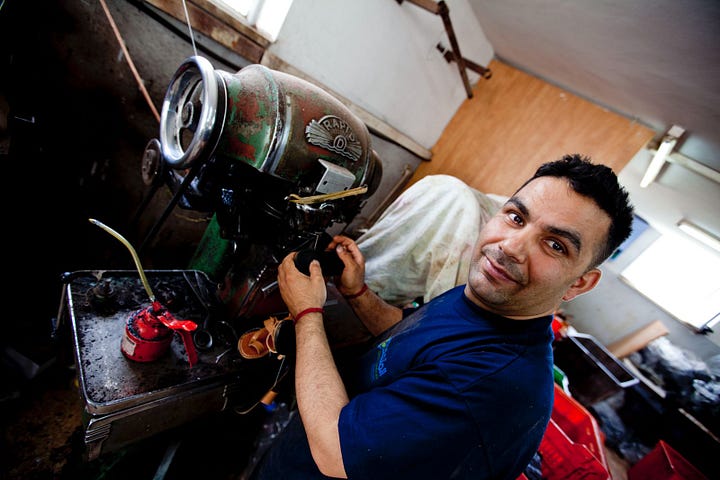
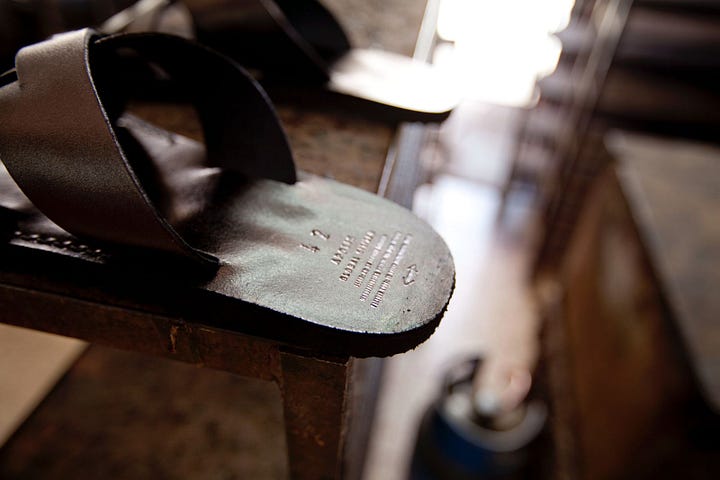
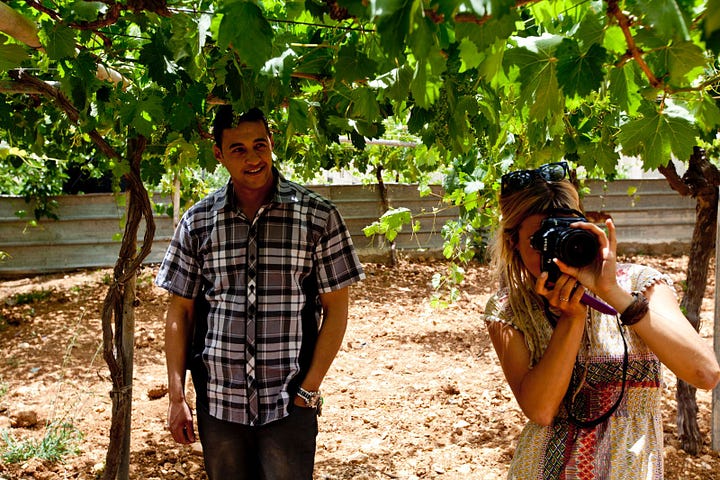

While driving up the foothills toward Jerusalem, I felt a vague sense of dread setting in, and for good reason: my recent engagement with the West Bank was purely through reading news articles, all of which focused on the sensational violence occurring there. Settler attacks were on the rise, and so was Palestinian retribution. A bar-mitzvah aged Jewish shepherd went missing, his body found a week later. Then a Palestinian village was torched. Elite IDF units had suddenly become active in West Bank terrorist strongholds, and once-rare airstrikes had started to become common.
My colleague was right: I didn’t know the roads at all. I was totally dependent on Waze, but at any moment the GPS could get scrambled, tricking my phone into thinking it was in Amman, Beirut or West Africa. Then what would I do?
I thought about the first thing I learned in my grad school statistics course: when a professional golfer tees off, there is close to a 100% chance that the ball will land on a blade of grass. But there is close to a 0% chance that it will land on a specific blade of grass. In other words, crazy violent shit will certainly go down, but it almost certainly will not happen to me. So, Baruch Hashem, kadima.
Less than an hour after leaving our apartment in Tel Aviv, I crossed into the West Bank by driving through a sparsely staffed military checkpoint, not even having to slow down. It was even less eventful than driving into Tijuana. I thought everything was fine, but while fidgeting with my phone to switch up the music, someone spotted me and called in the infraction. It’s hilly and forested there, and the hills have eyes.
Minutes later, armored vehicles blocked one of the two lanes on the roadway, and a military policeman motioned for me to pull over. My accuser advised that I would receive a 1,000 shekel fine for touching my phone while driving, but I negotiated my way out of it through feigned ignorance, buttressed by a bizarre appearance: long, flowing hair, no beard, a Hawaiian Aloha shirt and flip flops. The guy really didn’t know what to do with me, and actually threw me a Shaka sign after we hugged it out, the friendly end of his M16 pressed gently into my stomach.
After passing through a large yellow gate guarded by a team of IDF soldiers, I sat for hours with a social worker named Eliaz in Kfar Etzion, the very first settlement built by Jews in the modern era. The Jewish National Fund and early Zionist businesspeople had purchased the land from Arabs in the early 20th Century and built a kibbutz there along the road from Jerusalem to Hebron. They lived peacefully with their Arab neighbors, visited each other’s homes, and traveled on Arab buses to and from the Old City of Jerusalem, a 30-minute drive.
But in 1947, the British approved a 2-state partition plan that would put Kfar Etzion just inside the border of the proposed Arab state, and the next day hundreds of Arab militants started attacking the tiny kibbutz. Many Jewish settlers (including Holocaust survivors) were killed and taken prisoner, and dozens were executed even after their final surrender to the Arab forces. The kibbutz was razed and held by the Jordanian army for 20 years until the Six Day War, which started as an attempt by Egypt, Jordan and Syria to destroy Israel, but ended with Israel’s triumphant expansion, including the entirety of the West Bank. Kfar Etzion was then rebuilt largely by the fatherless children of the original settlers.
Now, it is a thriving, modern Orthodox kibbutz, one node in a network of kibbutzim in the Gush Etzion region, where a minority of settlers live for Religious Zionist reasons, but the majority live for quality of life and relative affordability (for the price of a cramped apartment in Jerusalem, you can have a large home, big yard, and plenty of parking in the settlements, many of which resemble American suburbs).
Eliaz told me about moving from the outskirts of Tel Aviv to the West Bank at age 7. He remembers Palestinian families helping them by running electrical lines as they built their settlement from scratch. In turn, his community provided the Arabs with water and other goods. There was no conflict, and there were not even fences or walls. Settlers learned Arabic to understand their culture and to become better neighbors, and as kids they all played together without reservation.
When violence eventually broke out elsewhere in the West Bank, kibbutzim started installing security fences. But out of view, Eliaz and his friends would cut holes in the fences so they could keep playing together, with Jewish and Palestinian kids even organizing secret summer camps out in the surrounding nature.
He told me that putting up fences is what increases the dehumanization and erodes our mutual understanding and trust. Of course there are monsters out here, but he feels that most people are not like that. He said, “Most of us just want to live peacefully and to know that we can all build a legacy here with dignity, without occupation, without terror. This is the strong will of the majority, and many of us here know that it is not an abstract dream, since we already lived this way in the past. We have proved the model, and we know that we can live this way again. Our obligation is to our shared future, and we will never give up.”
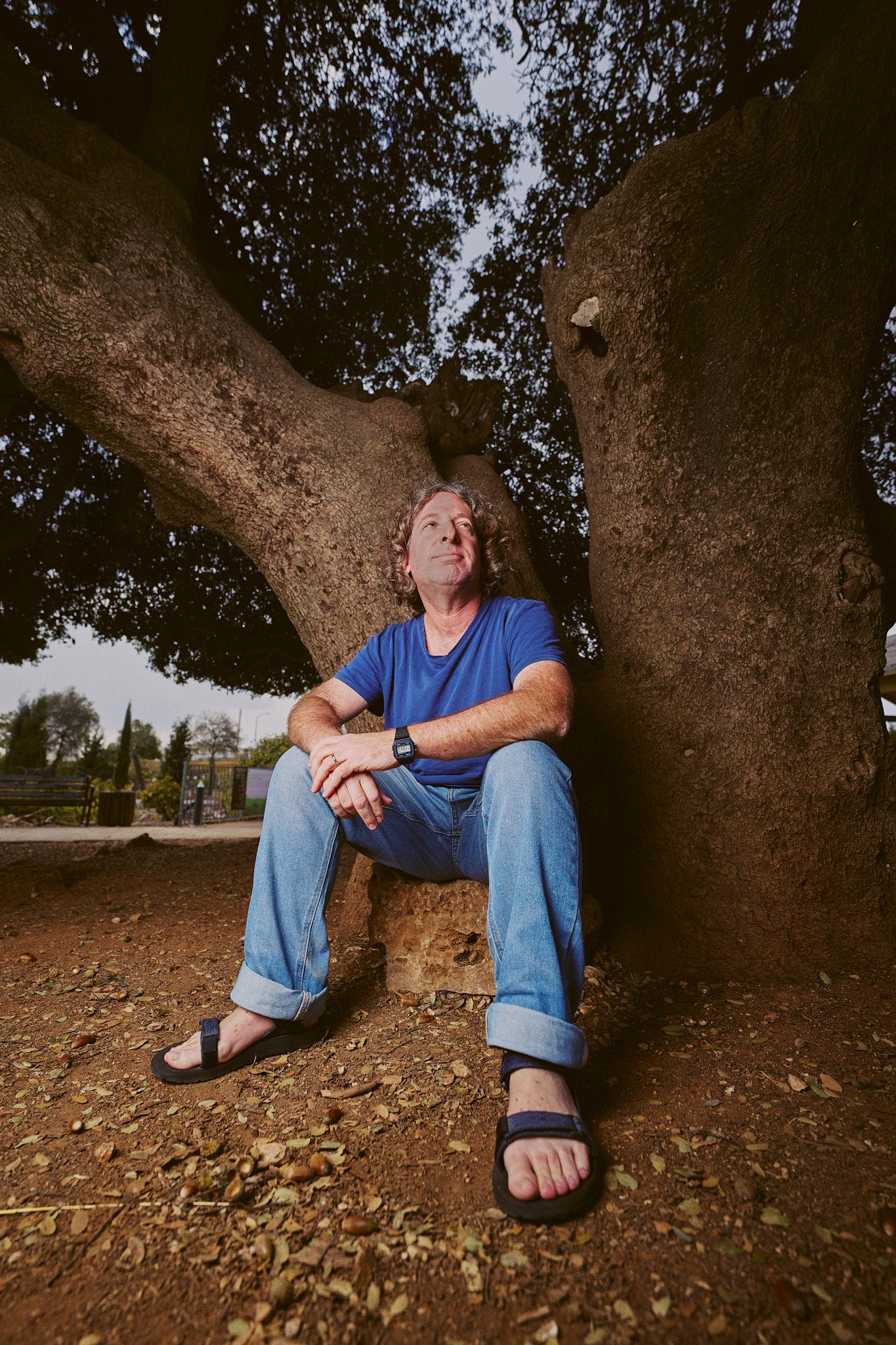
The next Sunday, I returned to the West Bank, passing through a different checkpoint with similar ease. Feeling much less anxiety than in my first trips, I had more mind space to notice things in the environment. Instead of the ubiquitous yellow license plates, most of them were green and white, signifying registration by the Palestinian Authority. I waved and smiled at every passing car, and most of them smiled and waved back.
I saw school busses unloading 30-40 Palestinian kids right by an Israeli school that had just let out. The two small hordes kind of zippered together in nonchalance, as they walked down the same roadway toward their respective villages, one opposite the other.
Huge trucks were driving everywhere, mostly with yellow Israeli license plates and brand names of construction companies emblazoned on the sides. New settlements were getting built, and existing ones were expanding so much that they started to resemble small cities. Along the modern, smoothly-paved roadways were billboards advertising new housing units, and I saw huge stickers with a picture of Rabbi Nachman and Hebrew text that translates to, “Long Live the King Messiah” plastered over Arabic roadsigns.
Due to general ignorance, I had expected to find a relative backwater of ramshackle villages and bumpy roads. But what I saw looked like the outskirts of Be’er Sheva, which looks like the early days of Orange County: tons of space, and modern infrastructure designed for rapid growth.
I pulled into a super diverse settlement of 4,000 people built around the tomb of our prophet Amos, preparing to interview the widow of the Chief Rabbi of Takoa, famous for his unusual commitment to coexistence with Palestinians. Since the homes there have no addresses, and since my Hebrew wasn’t strong enough to follow her instructions, I picked up a hitchhiker who guided me to her dwelling, excited by the prospect of being in her presence, if even just for a moment.
Hadassa immediately struck me as wise and elegant, with the strongest spiritual presence I had ever encountered. We sat in her living room with a friend on speakerphone to help translate, and she told me that when she and her late husband Menachem came to establish the Migdal Oz settlement in Gush Etzion, there was a sticker there that said, “The Land of Israel Belongs to the People of Israel.” Menachem saw this, laughed, and said, “No - it is exactly the opposite!” He tore the sticker several times and reconstituted it to say: “The People of Israel Belong to the Land of Israel.”
She told me that in Hebrew, the two terms “adam” and “adama” respectively mean “human” and “earth.” These two words derive from the same etymological root because the living earth is the root of life from which humans were created. The vitality of the land is the vitality of the human. For us to realize the full potential of our vitality, we must connect or reconnect with the vitality of this land in a spiritual way. This requires great humility, and when we finally find a way to deemphasize our egoistic sense of self-importance, we can start to build our spiritual relationship with the land in a way that recognizes the land as the mother, and ourselves as her children.
Together, she and Menachem developed an understanding that HaShem colocated us with Arabs for a specific purpose: so that we may do the work to peacefully coexist with mutual love and respect, all recognizing that we are children of the same land. When Menachem started his journey, he was a lone voice howling his ideas into the desert wind. But throughout his years, he became a teacher to thousands, and many of them are continuing to put his ideas into practice every day, living in Judea and Samaria with a firm grasp of our history here, and a clear eye toward a shared future of spiritual purity.
A week later, I returned once again, this time pushing a little bit deeper to meet a 45 year old American Oleh named Ari who took a barren mountaintop on the Judean Frontier and developed it into one of the most gorgeous properties I have seen in my life. Home to four families, it towers over the Jordan River Valley and Dead Sea, right in the vicinity where King David hid in caves and wrote the Psalms.
Ari told me that his 5th grade rebbe at a Jewish day school in Houston would regale his class with stories from his time serving in the IDF, and that through these stories something awakened in his own cells. From the age of 10, he knew that he wanted to make Aliyah and fight for Israel, and while still a teenager, he made it happen.
After his service, he built a media company in Jerusalem, but felt a nagging sense that his potential was not fulfilled. He told me that about a decade ago, he was approached with an opportunity to build a community from scratch, and when he first walked onto the barely accessible landscape of rocks, thorns and tumbleweeds, he looked out at the panoramic view of the rolling hills and felt his cells activate with yet another epigenetic awakening, but this time even more profound than the one of his childhood. Something inside of him remembered that this is where he was really from.
He told me about the day that the Germans arrived. They told him that they were artisans and craftsmen, many of them children and grandchildren of Nazis. They had come, in their own words, to do teshuvah. While their forebears had brought curses and destruction upon the Jewish people, their goal was to bring blessings and to build. He recalled the moment when he witnessed his Arab workers, descendants of Yishmael, harmoniously working together with his German volunteers, descendants of Esav, to build a stunningly beautiful, all-stone Beit Knesset for Jews in Judea.
He said that when people come here, they often say that the experience is revolutionary. “And that is exactly what it is, in the literal definition of the word: when the hand on a clock goes all the way around and lands where it started, that is a revolution. Here we are, in our timeless spiritual home, back where we started as Am Yisrael.”
For the third time in three weeks, I drove back to Tel Aviv under the setting sun, thinking about the future. I thought about Eliaz, Hadassah and Ari, all of whom have an unbreakable bond to the land of our ancestors, but all of whom have put in time, effort and respect to earn good relations with their Arab neighbors. The model of coexistence is already working for the vast majority in this Wild West environment, but the balance is repeatedly attacked from the vendetta-holders on margins, Jewish and Arab alike.
In English, the term “terrorist” focuses on the impact of violent acts against the civilian public — it serves to terrorize them. The term translates into Hebrew as “mechabel,” which really means “saboteur,” a far more fitting description. It takes decades of repeated acts of goodwill to build up a sustainable trust, and only an instant to rip it to shreds. Tactically, this sad feature of human nature gives extremists an upper hand.
But still, I remain hopeful. Though they earn a majority of the news coverage, extremists are just a tiny minority. Of late, their meager victories and amounting defeats suggest that the long arc of history does indeed bend toward justice. If anything has become certain to me through these recent experiences, it is that the Jews will never leave this land, and neither will the Palestinians. So we are all left with a simple choice: we can either share the land, or the graveyard beneath. On this question, our ancient tradition guides us with moral clarity: choose life.




